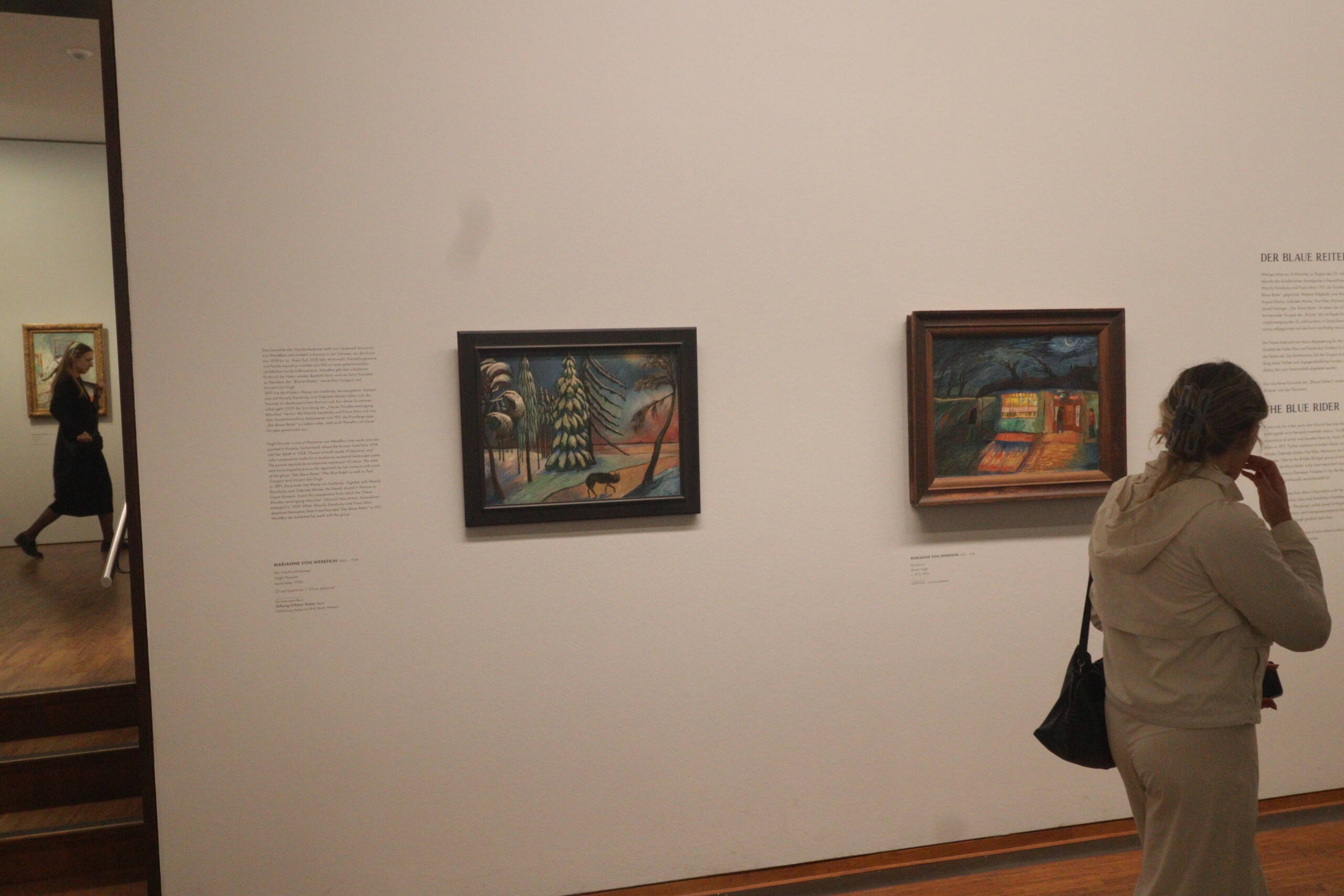The Albertina Museum in Vienna has a way of staging art so that history feels close at hand, as if you’ve stepped not just into a gallery but into the atmosphere of another era. In this photograph, that effect is palpable. Two paintings by Marianne von Werefkin hang side by side, modest in scale but charged with the intensity of the Der Blaue Reiter (The Blue Rider) movement, which reshaped European art in the early 20th century.

The left canvas is a wintry landscape with almost surreal tension: snow-heavy trees stand like figures themselves, and beneath them a dark animal—a dog or perhaps a wolf—moves across a path. It’s not simply a forest; it’s a psychological stage. The stark silhouettes and cool tones pull the viewer into a state of heightened awareness, as if danger and beauty are fused in one breath. To the right, a different mood emerges. A cabin glows from within, its windows lit with warm reds and oranges, but it sits against a backdrop of a restless, shadow-drenched night. The brushwork is turbulent, the landscape unsettled. Werefkin manages to paint not just a place but an emotion—a fragile balance between shelter and isolation, warmth and darkness.
The wall text references Der Blaue Reiter, reminding visitors of how Werefkin was woven into the orbit of Wassily Kandinsky, Franz Marc, and Gabriele Münter. Unlike many of her male peers, she never enjoyed the same level of fame, but her work carried equal weight. She translated landscapes into visions of the soul, often infusing nature with symbols of human vulnerability. These paintings at the Albertina are a testament to how she worked on the edge of expressionism and spirituality, blurring the line between outer scenery and inner turmoil.
The photograph itself, though, tells another layer of story. To the far left, a woman in dark clothing strides briskly through a doorway, her body in motion, a fleeting presence. In the foreground, another visitor dressed in light beige pauses, caught in thought as she studies the wall text, hand lifted to her mouth in a gesture of concentration. Between them, Werefkin’s two paintings glow quietly on the white wall, as if immune to the shifting rhythms of the gallery space. It’s a beautiful contrast: movement and stillness, everyday distraction and deep engagement, all orbiting around works that were created more than a century ago yet still reach into the present.
That’s the charm of the Albertina. It doesn’t just hang paintings; it creates a dialogue between the art, the space, and the visitors who pass through. Standing in front of Werefkin’s works here, you feel part of the story of The Blue Rider—a movement that was never about one voice but about a chorus of artists daring to let inner visions break free on canvas.
Leave a Reply